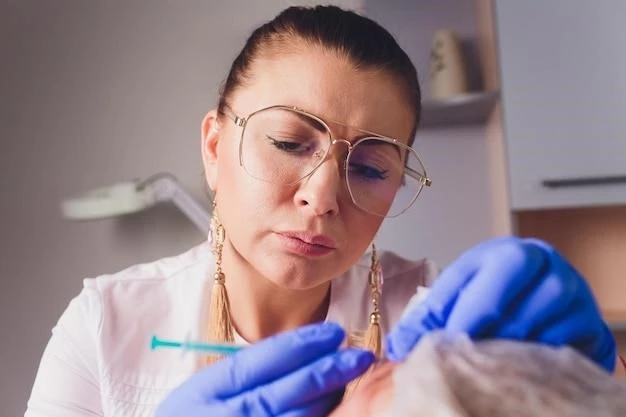Disease ⎼ Dermatoleukodystrophy
Introduction
Dermatoleukodystrophy is a rare genetic neurodegenerative disorder that affects the myelination of the nervous system. This condition is characterized by a mutation that impacts the process of myelin formation and leads to progressive neurological symptoms.
Individuals with dermatoleukodystrophy often experience a range of challenging symptoms that can impact their quality of life. Early diagnosis and intervention are crucial in the management of this disorder. While there is currently no cure for dermatoleukodystrophy, ongoing research efforts aim to improve our understanding of the disease and develop more effective treatment strategies.
This article provides a comprehensive overview of dermatoleukodystrophy, including its genetic basis, symptoms, diagnosis, treatment approaches, research progress, disease management strategies, and the importance of patient education and support in coping with this condition.
Understanding Dermatoleukodystrophy
Dermatoleukodystrophy is a complex genetic disorder that primarily affects the myelination of nerve cells in the central nervous system. The disease disrupts the normal process of myelin production, leading to the deterioration of the protective sheath around nerve fibers.

This progressive neurodegenerative condition can result in a range of symptoms, including cognitive impairment, motor dysfunction, vision and hearing problems, and seizures. The severity and combination of symptoms can vary widely among affected individuals.
Researchers have identified specific genetic mutations associated with dermatoleukodystrophy, highlighting the underlying genetic basis of the disorder. Understanding the genetic mechanisms involved is crucial for advancing diagnosis, treatment, and management strategies for individuals with this rare disease.
Efforts to unravel the pathophysiology of dermatoleukodystrophy have shed light on the intricate interplay between genetic factors, cellular processes, and neurodegeneration. Continued research into the molecular mechanisms of the disease is essential for developing targeted therapies that address the root causes of dermatoleukodystrophy.
Genetic Basis
Dermatoleukodystrophy is primarily caused by genetic mutations that affect the myelination process in the nervous system. Specific genes involved in myelin formation and maintenance can harbor mutations that disrupt normal myelin production and maintenance.
One of the key genetic components implicated in dermatoleukodystrophy is related to alterations in genes responsible for encoding proteins crucial for myelin sheath formation. Mutations in these genes can lead to abnormalities in myelin structure and function, contributing to the neurodegenerative nature of the disorder.
The inheritance pattern of dermatoleukodystrophy can vary, with some forms of the disease following an autosomal recessive pattern, requiring mutations in both copies of the gene for an individual to develop the disorder. In other cases, the disease may be inherited in an X-linked recessive manner.
Advances in genetic testing techniques have allowed for the identification of specific mutations associated with dermatoleukodystrophy, enabling more accurate and efficient diagnosis of the condition. Understanding the genetic basis of the disease is crucial for personalized treatment approaches and genetic counseling for affected individuals and their families.
Symptoms of Dermatoleukodystrophy
Dermatoleukodystrophy presents with a spectrum of symptoms that reflect the underlying neurodegenerative nature of the disorder. Individuals affected by this condition may experience a variety of manifestations that can impact different aspects of their neurological functioning.
Common symptoms of dermatoleukodystrophy include progressive cognitive decline, motor deficits such as spasticity and ataxia, visual and auditory impairments, seizures, and behavioral changes. These symptoms can significantly affect an individual’s daily activities and quality of life.
As the disease progresses, individuals may exhibit worsening symptoms, leading to severe disability and loss of independent function. The onset and severity of symptoms can vary widely among affected individuals, making the clinical presentation of dermatoleukodystrophy heterogeneous.
Early recognition and management of symptoms are crucial in providing appropriate care and support for individuals with dermatoleukodystrophy. Understanding the diverse array of symptoms associated with the disorder is essential for healthcare professionals to address the complex needs of patients and optimize their quality of life.
Diagnosis and Detection
Diagnosing dermatoleukodystrophy involves a comprehensive evaluation that includes medical history assessment, physical examination, neuroimaging studies, and genetic testing. The clinical presentation of the disease, coupled with advanced diagnostic tools, is essential for accurate identification and confirmation of the condition.
Neuroimaging techniques such as magnetic resonance imaging (MRI) play a critical role in visualizing changes in the brain’s white matter, which can be indicative of myelin abnormalities characteristic of dermatoleukodystrophy. These imaging studies help in identifying specific patterns of brain involvement and monitoring disease progression.
In addition to neuroimaging, genetic testing is pivotal in diagnosing dermatoleukodystrophy, as it allows for the identification of specific gene mutations associated with the disorder. Targeted genetic analysis helps confirm the underlying genetic basis of the condition and can guide treatment decisions and genetic counseling for affected individuals and their families.
Early and accurate diagnosis of dermatoleukodystrophy is essential for initiating timely interventions and implementing appropriate management strategies to address the complex needs of patients. Collaborative efforts among multidisciplinary healthcare providers are crucial in ensuring a comprehensive diagnostic approach and optimizing patient outcomes.
Treatment Approaches
The management of dermatoleukodystrophy focuses on addressing symptoms, optimizing neurological function, and enhancing the quality of life for affected individuals. While there is currently no cure for the disorder, various treatment approaches aim to alleviate symptoms and provide supportive care.
Pharmacological interventions may be employed to manage specific symptoms associated with dermatoleukodystrophy. Medications such as antiepileptic drugs to control seizures, muscle relaxants for spasticity, and supportive therapies for cognitive and behavioral symptoms can be prescribed based on individual needs.
Physical and occupational therapy play a vital role in maintaining mobility, improving motor function, and enhancing independence in daily activities for patients with dermatoleukodystrophy. These therapy modalities aim to optimize physical function and prevent complications associated with motor impairment.
Speech therapy and assistive devices may be recommended to address communication difficulties and promote effective verbal and non-verbal communication strategies in individuals with dermatolejsondystrophy. Augmentative and alternative communication techniques can also enhance overall communication skills.
A holistic approach to care that includes psychosocial support, counseling, and access to community resources is essential in the comprehensive management of dermatoleukodystrophy. Multidisciplinary teams collaborate to provide tailored care plans that meet the unique needs of patients and their families, fostering a supportive and empowering environment.
Progress in Research
Ongoing research endeavors in the field of dermatoleukodystrophy have significantly advanced our understanding of the disease mechanism, genetic factors, and potential therapeutic targets. These research efforts are essential for developing novel treatment strategies and improving patient outcomes.
Investigations into the molecular pathways involved in myelination and its disruption in dermatoleukodystrophy have provided valuable insights into the pathophysiology of the disorder. Researchers are exploring ways to modulate these pathways to restore normal myelin function and slow disease progression.
Genetic studies have identified key gene mutations associated with dermatoleukodystrophy, paving the way for targeted genetic therapies and personalized medicine approaches. Gene editing technologies and gene therapy hold promise for correcting genetic defects and addressing the root cause of the disease.
Clinical trials and experimental interventions are underway to evaluate the safety and efficacy of potential therapies for dermatoleukodystrophy. These trials aim to assess novel treatment modalities, including stem cell transplantation, enzyme replacement therapy, and gene-targeting interventions, with the goal of improving patient outcomes and quality of life.
Collaborative research efforts involving scientists, clinicians, advocacy groups, and affected individuals are essential for driving progress in the field of dermatoleukodystrophy. By sharing knowledge, resources, and expertise, the collective research community is advancing towards finding effective treatments and ultimately a cure for this challenging neurodegenerative disorder.
Disease Management Strategies
The management of dermatoleukodystrophy necessitates a comprehensive and multidisciplinary approach to address the diverse needs of individuals affected by the disorder. Disease management strategies focus on symptom control, supportive care, and optimizing quality of life for patients and their families.
Establishing a personalized care plan that addresses the specific symptoms and challenges faced by each individual is fundamental in dermatoleukodystrophy management. Healthcare providers collaborate to tailor interventions that encompass medical, rehabilitative, and psychosocial support.
Regular monitoring and follow-up evaluations are essential in tracking disease progression, assessing treatment response, and modifying care plans accordingly. Close communication between healthcare teams, patients, and caregivers facilitates ongoing management and ensures timely interventions.
Educating patients and families about the nature of dermatoleukodystrophy, its progression, and available treatment options is crucial in empowering them to actively participate in the management process. Support groups and educational resources can provide valuable support and information.
Advance care planning, including discussions about future care preferences, end-of-life decisions, and access to palliative care services, plays a significant role in disease management for individuals with dermatoleukodystrophy. Ensuring a compassionate and dignified care approach is paramount in supporting patients and their loved ones throughout their journey.
Patient Education and Support
Education and support are vital components of comprehensive care for individuals with dermatoleukodystrophy. Providing patients and their families with accurate information, resources, and emotional assistance is essential in managing the challenges associated with the disorder.
Healthcare providers play a key role in educating patients about dermatoleukodystrophy, including its symptoms, prognosis, treatment options, and available support services. Empowering individuals with knowledge fosters informed decision-making and promotes active participation in their care.
Support groups, both in-person and online, offer individuals with dermatoleukodystrophy and their families an opportunity to connect with others facing similar challenges. These groups provide emotional support, practical advice, and a sense of community, reducing feelings of isolation and enhancing coping strategies.
Counseling and mental health services can be beneficial in addressing the emotional impact of living with a rare and progressive neurodegenerative disorder. Psychosocial support enables patients and families to navigate complex feelings, cope with uncertainty, and develop resilience in the face of adversity.
Continuous patient education, ongoing support, and access to specialized healthcare professionals contribute to a holistic approach in managing dermatoleukodystrophy. By fostering a supportive environment that prioritizes patient well-being and autonomy, healthcare providers can enhance the overall quality of care for individuals affected by the disease.
Conclusion
In conclusion, dermatoleukodystrophy remains a challenging and rare genetic neurodegenerative disorder with significant implications for affected individuals and their families. The progressive nature of the disease underscores the importance of early diagnosis, personalized treatment approaches, and multidisciplinary care coordination.
Advancements in research have provided valuable insights into the genetic basis and pathophysiology of dermatoleukodystrophy, driving the development of novel therapeutic interventions and potential targeted treatments. Collaborative efforts across scientific disciplines aim to improve patient outcomes and enhance quality of life for those living with the disorder.
Effective disease management strategies, including symptom control, rehabilitation services, and psychosocial support, are crucial in addressing the multifaceted needs of individuals with dermatoleukodystrophy. Patient education, support networks, and access to specialized care play a pivotal role in empowering patients and promoting well-being.
Looking ahead, continued research, innovative treatment modalities, and advocacy for rare disease awareness are essential in advancing the field of dermatoleukodystrophy. By fostering a comprehensive understanding of the disorder, implementing evidence-based practices, and prioritizing patient-centered care, healthcare providers can make a meaningful difference in the lives of those affected by this complex condition.
Ultimately, through ongoing collaboration, education, and support, the dermatoleukodystrophy community can strive towards optimizing patient care, enhancing quality of life, and fostering hope for the future in the face of this challenging neurodegenerative disorder.
